There are various rules and regulations regarding the graveyard and a comprehensive list can be found on the diocesan website
A summary of the rules and regulations is set out below for those who don’t want to read the full documentation
CHURCHYARD REGULATIONS
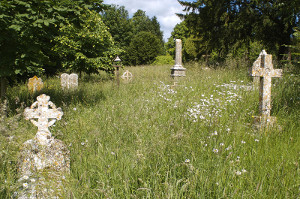 Right of Burial
Right of Burial
The parishioners, those whose names are on the Electoral Roll and persons who die in the parish have a right of burial, including the right to have their ashes buried, in the churchyard. The Incumbent may also allow others to be buried there, with the consent of the PCC. If the Incumbent declines to give his consent, there is no appeal from his decision. It is for him also to decide the grave space to be used, unless a space has been reserved beforehand by Faculty
Monuments in Churchyards
As explained above, certain persons have a right of burial in the churchyard. Neither the fact a grave space has been reserved, or the exercise of a right of burial, allows a monument to be erected without permission. Once a memorial has been set up, it cannot be removed except by a Faculty granted for that purpose. A monument is the property of the person who erected it and after his death, the heirs or heirs at law of the person in whose memory it was erected. They are responsible for its maintenance, although the PCC also have duties to ensure the churchyard is reasonably safe for those who come there
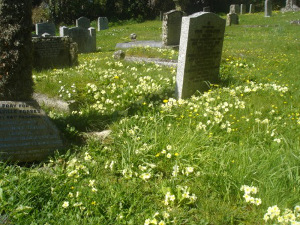 It would obviously be inconvenient and expensive to require all those who want to erect a memorial to apply for a Faculty. Therefore Incumbents are hereby given authority to consent in writing to the erection of gravestones, tombs and monuments complying with the regulations given below. Those who erect monuments not in compliance with these regulations and without a Faculty, whether or not they have obtained the Incumbent’s consent, may be required to remove them and to pay the costs of the proceedings compelling them to do so. Applications for the Incumbent’s consent must be made in writing on the appropriate form. They should give a full description of the proposed work, including all maximum dimensions and any inscription to be made upon the memorial. The Incumbent may consult the DAC or the Registrar before giving or withholding his consent and is, in every case, entitled to require the applicant to petition for a Faculty
It would obviously be inconvenient and expensive to require all those who want to erect a memorial to apply for a Faculty. Therefore Incumbents are hereby given authority to consent in writing to the erection of gravestones, tombs and monuments complying with the regulations given below. Those who erect monuments not in compliance with these regulations and without a Faculty, whether or not they have obtained the Incumbent’s consent, may be required to remove them and to pay the costs of the proceedings compelling them to do so. Applications for the Incumbent’s consent must be made in writing on the appropriate form. They should give a full description of the proposed work, including all maximum dimensions and any inscription to be made upon the memorial. The Incumbent may consult the DAC or the Registrar before giving or withholding his consent and is, in every case, entitled to require the applicant to petition for a Faculty
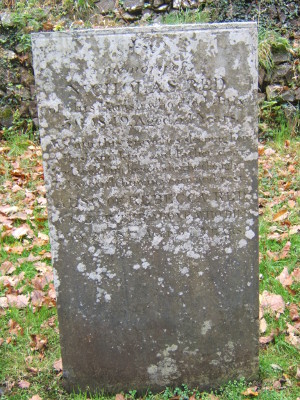 Materials
Materials
- Materials must harmonise with the natural local landscape and local stones are preferred
- The following stones will generally be permitted:
- Limestone (e.g. Derbyshire Hoptonwood, Cumbria Salterwath, North Wales Halkyn)
- Sandstone (e.g. Cumbria St Bees, Derbyshire Stanton Moor, West Yorks Bolton Wood)
- Slate (e.g. Cumbria Burlington; various colours, Wales blue grey)
- Granite (e.g. Cumbria Shap light grey, Devon Merrivale, Scotland Creetown)
- The following materials are NOT permitted:
- Black, dark grey, blue or red granites, any marble, synthetic stone, plastic materials, metal and terra cotta
- If the Incumbent is in any doubt about the colour or suitability of the stone for a particular churchyard, he should ask for a sample
Finish
Polishing shall not be greater than that required to give a good smooth finish and must be confined to the face of the gravestone on which the inscription is to be cut. The finish of this face must be non-reflective
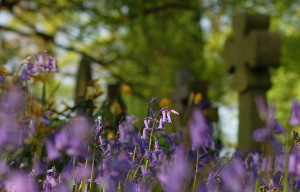 Dimensions
Dimensions
- Headstones (including base); no larger than 48” high, 36” wide and 6” thick (120x 90 x 15 cm); no less than 30” high, 20” wide and 3” thick (75 x 50 x 7.5 cm), but in the case of slate 2” (5.1 cm) thick
- Horizontal Slabs: no larger than 84” x 35” 9210 x 90 cm) including any base flush with the ground extending not more than 5” (12.5 cm) around the stone
Design
- Headstones: may be placed on a base of the same material and fixed to a foundation base flush with or below ground level so that the upper base:
- Does not project above the ground level more than the thickness of the gravestone
- Does not project more than 4” (10 cm) beyond the headstone
- A receptacle for flowers may be incorporated in the upper base which might then extend up to 8” (20 cm) in front of the headstone
- A flower receptacle, not incorporated into the base must be of metal and set flush with the ground to allow a mowing machine to pass safely over. It must NOT be of glass or ceramic. The use of artificial (silk or plastic) flowers is not permitted except for Remembrance poppies and Christmas wreaths which should be remove after four weeks
- Carving: Simple decorative carving may be allowed provided that the design is submitted to the Incumbent but in such cases the Incumbent may require an application to be made for a Faculty
- THE FOLLOWING ARE NOT PERMITTED: CURBS, RAILINGS, PLAIN OR COLOURED CHIPPINGS, FREE-STANDING CONTAINERS OF ANY KIND, STATUES, OPEN BOOKS, BIRD BATHS, PICTORIAL ETCHINGS, MEMORIALS IN UNUSUAL SHAPES (SUCH AS A HARP OR A HEART). CAMEOS, PORTRAITURE, PHOTOGRAPHS OR COLOURED DESIGNS
- If it is desired to erect a cross, other than a simple wooden cross, not more than 36” (92 cm) in height, it should be individually designed and a FACULTY is required for its erection. In the petition, reasons for requiring this supreme Christian symbol must be fully stated
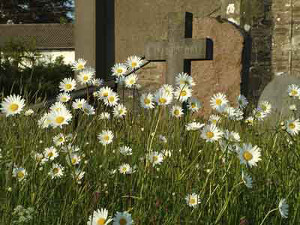
Inscriptions
- Details: These should include a full Christian name and surname of the deceased with age and date (or year) of death, or of the years of birth and death. In expressing these dates it is preferable to use the notation 1st of January 1992 rather than 1/1/92. In addition, if space permits, it is good to include occupation, title or honour and where he or she lived
- Epitaphs: The object of epitaphs is “to identify the resting place of the deceased, to honour the dead, to comfort the living and to inform posterity”. They should, therefore, be simple and relevant. Nick-names are not considered suitable and if a scripture text is used it is unnecessary to give the reference. Quotations may be taken not only from the Bible; the Prayer Book, hymns, poetry and prose are all suitable sources so long as the quotation is consistent with Christian belief. It should be borne in mind that not all phrases which express present grief will read well in, say thirty years’ time
- Lettering may be unpainted, painted gilded or leaded. The mason’s name may be inscribed at the side or on the reverse of the headstone at ground level in unpainted and unleaded letters not larger than half an inch (15 mm) in height. Trademarks or advertisements are NOT permitted
- Additions may be made to an inscription at a later date following a subsequent interment in the same grave, but approval of the Incumbent is required and the wording and style must be consistent with the original inscription
- Terms of endearment are NOT generally approved and no cross other than the cross of Christ (such as a multiplication sign indicating a kiss) is permitted
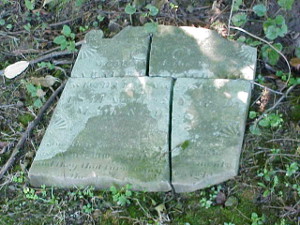
Reference to relationships is best expressed in the terms given in the Churchyard Handbook
Cremated Remains
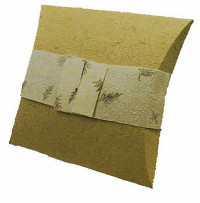 Cremated remains may be interred in an existing grave or otherwise in a part of the churchyard specially reserved for the purpose under the authority of a Faculty
Cremated remains may be interred in an existing grave or otherwise in a part of the churchyard specially reserved for the purpose under the authority of a Faculty
If an area of the churchyard is set aside by Faculty, then conditions will be laid down as to the manner in which the deceased may be commemorated. The Faculty may contain specific rules about memorials and the placing of flowers which apply only to that area. Any specific rules, e.g. about size or wording modify the general rules above and do not override other requirements, e.g. about the types of stone allowed
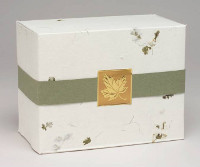
Burial of cremated remains is the proper method of interment. Scattering of ashes in a churchyard is not appropriate and can be distressing to the bereaved
It is preferable that the cremated remains are committed directly into the earth from the point of view of symbolism and practical sense. If the bereaved are unwilling to accept this, any container should be of a perishable material
Maintenance of Churchyards
PCCs have a duty to see that churchyards are kept generally in such an orderly and decent manner as becomes consecrated ground and that boundaries are defined and maintained
Additional notes taken from ‘Practical Church Management’ by James Behrens
The PCC should deal with any dangerous situation, such as an unsafe gravestone
It is recommended not to cut the grass in May or June when most of the churchyard species of wild flowers will be in flower
Even if the PCC does not want to encourage wildlife in all parts of the churchyard, it should be allowed to grow in at least some areas
Churchyards are also of importance for lichen conservation and some lichens are protected species under the Wildlife and Countryside Act 1981
